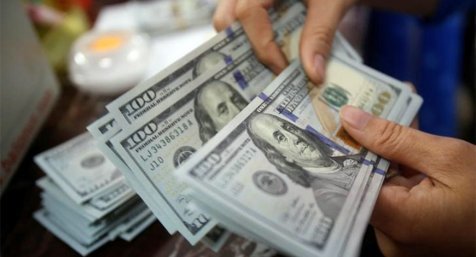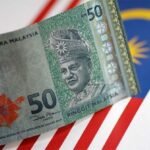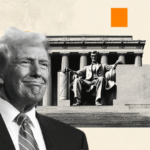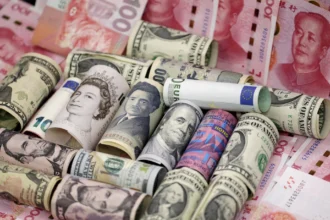Despite the growing conversation around de-dollarisation and the rise of alternate currencies, CareEdge Ratings has said that the US dollar continues to dominate the global monetary system, though its credibility as a long-term store of value is gradually eroding.
The agency’s analysis traces the historical roots of dollar supremacy to the 1944 Bretton Woods Agreement, which made the US dollar the anchor of the global monetary order by pegging it to gold. Even after the system collapsed in 1971 when President Richard Nixon ended dollar convertibility into gold, the currency maintained its global dominance through the petrodollar system, Eurodollar markets, and strong institutional backing of the US economy.
CareEdge noted that the dollar remains central to the global financial system because it performs three critical roles of a dominant reserve currency — as an international unit of account, a medium of exchange, and a store of value. However, while the first two functions remain robust, the third is increasingly under question amid shifting global dynamics.
Dollar Still Dominant In Global Trade And Payments
According to the report, the US dollar continues to shine as both a unit of account and a medium of exchange. Its share in international payments rose sharply from around 32 per cent in 2010 to 47 per cent in 2024, while the euro’s share declined from 40 per cent to 22.8 per cent during the same period. The Chinese yuan, though growing, still represents just 4.4 per cent of international transactions.
The dollar’s hegemony is further visible in the global foreign exchange market. The 2022 Triennial Central Bank Survey by the Bank for International Settlements (BIS) showed that the dollar was involved in nearly 88 per cent of all forex trades — a share that has remained largely stable for two decades. In contrast, the euro featured in 31 per cent of such transactions, while the yuan’s share stood at 7 per cent.
CareEdge highlighted that the dollar’s credibility as a store of value is being gradually undermined by rising US debt, policy uncertainty, and the increasing use of the currency for geopolitical leverage. This has prompted global central banks to diversify their reserves.
The share of dollar-denominated assets in global foreign exchange reserves has declined from around 66 per cent in 2015 to 56.3 per cent in recent years, as per the IMF’s Cofer data. In contrast, the Japanese yen and the Chinese renminbi have marginally increased their shares, though no single currency has yet emerged as a true alternative.
Foreign holdings of US Treasuries have also fallen sharply—from 51 per cent in 2012 to 32 per cent by the first quarter of 2025. Meanwhile, central banks are increasingly turning to gold as a hedge, with annual purchases more than doubling since the 2022 Russia–Ukraine war, reaching an average of 1,073 tonne a year.
CareEdge said that while the dollar’s strength as a medium of exchange and benchmark for pricing ensures its continued dominance, its weakening position as a long-term store of value “warrants close monitoring.”
Alternatives Face Structural And Political Constraints
The report observed that while the euro and the Chinese renminbi have gained prominence, both face significant structural limitations that prevent them from challenging the dollar’s supremacy.
For the euro, the lack of fiscal and political integration, the absence of a common sovereign bond market, and limited growth prospects in member countries continue to undermine its global appeal. The euro area’s high debt levels — with Italy, Greece, and France among the most indebted — and close geopolitical alignment with the US further limit its potential as an independent reserve currency.
Meanwhile, the Chinese renminbi’s progress is constrained by the absence of full capital account convertibility and heavy state control over financial flows. Despite China’s economic size and efforts to internationalise the renminbi, investors remain cautious due to governance and transparency concerns.
Japan’s yen, on the other hand, struggles with fiscal imbalances and an ageing population, while its ultra-loose monetary policies have reduced its attractiveness as a stable reserve asset.
The report noted that India is also taking gradual steps towards internationalising the rupee. The Reserve Bank of India’s 2023 report on rupee internationalisation outlined short, medium, and long-term measures, including expanding currency swap arrangements, encouraging rupee invoicing in trade, and integrating UPI with global payment systems.
India has entered bilateral currency swaps with countries such as Japan, Sri Lanka, and the UAE, and permitted trade settlements in rupees with 30 nations through Special Rupee Vostro Accounts. The RBI recently expanded the scope of these accounts to allow investments in corporate debt instruments, offering greater flexibility for partner countries holding rupee balances.
In addition, UPI’s growing global integration—with Singapore, the UAE, Mauritius, Nepal, and Bhutan—marks a milestone in India’s digital payment connectivity.
CareEdge concluded that despite emerging challenges, the dollar remains firmly entrenched at the core of the global financial system. While concerns over its role as a store of value have accelerated diversification efforts, the lack of credible alternatives means that a full-scale de-dollarisation remains unlikely in the medium term.
“The global monetary order is witnessing a slow but unmistakable shift,” the report stated. “While the dollar’s dominance may be contested, it will continue to hold its preeminence as the anchor of the international financial system for the foreseeable future.”





















